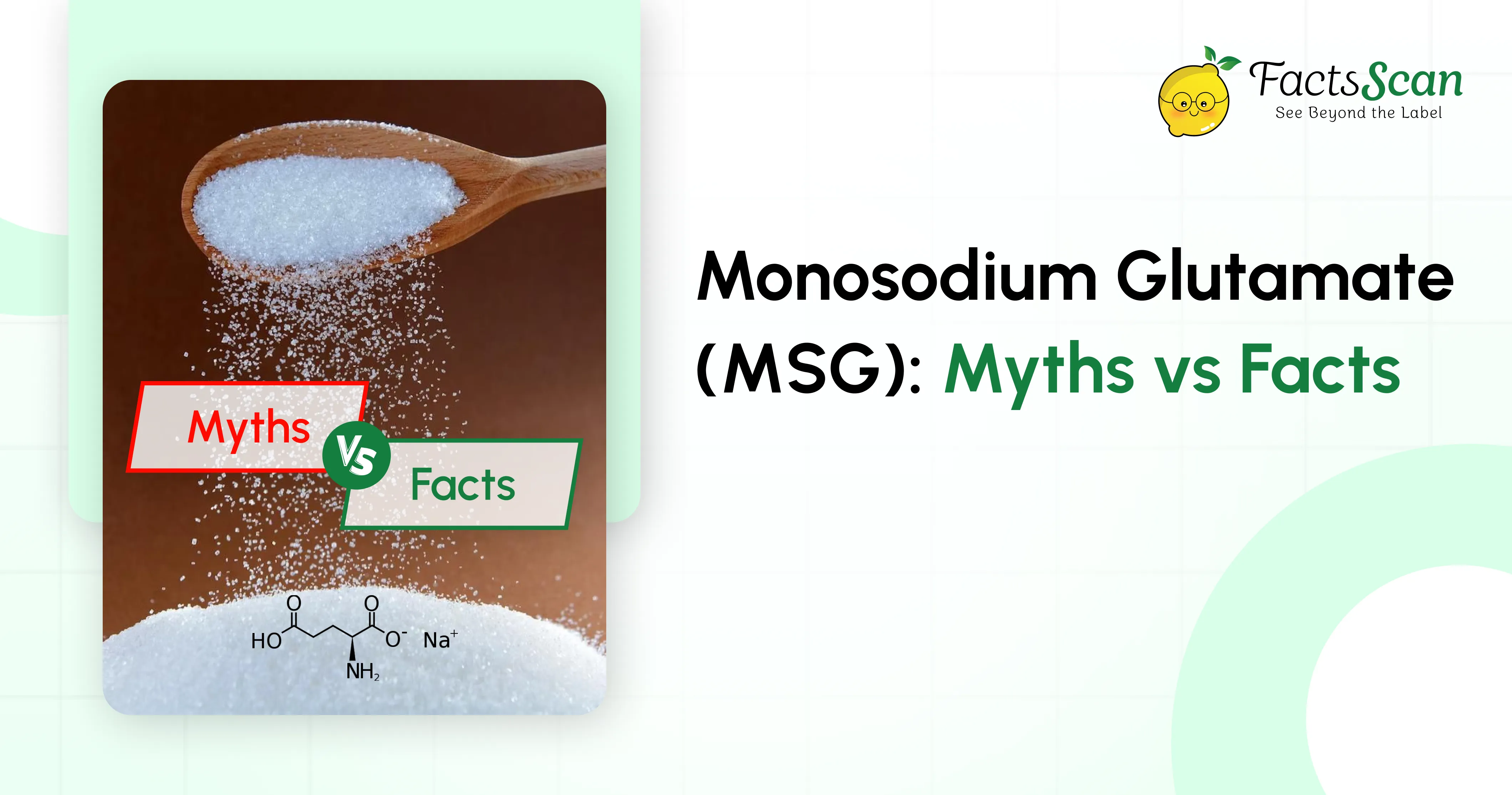Monosodium Glutamate (MSG): Myths vs Facts
Summary :
MSG is a safe food additive approved by FDA, WHO, and other health authorities worldwide. Common myths about headaches and health risks stem from debunked studies and cultural bias. Scientific research shows MSG poses no significant health threats when consumed normally. The FactsScan app helps identify MSG in packaged foods for informed dietary choices.
In today’s packaged food landscape, few ingredients spark as much debate as Monosodium Glutamate (MSG). Despite decades of scientific research supporting its safety, MSG continues to face widespread misconceptions and unwarranted fear. This comprehensive guide separates fact from fiction, helping you make informed decisions about MSG consumption while exploring how modern food scanning technology can support healthier eating choices.
What is MSG?
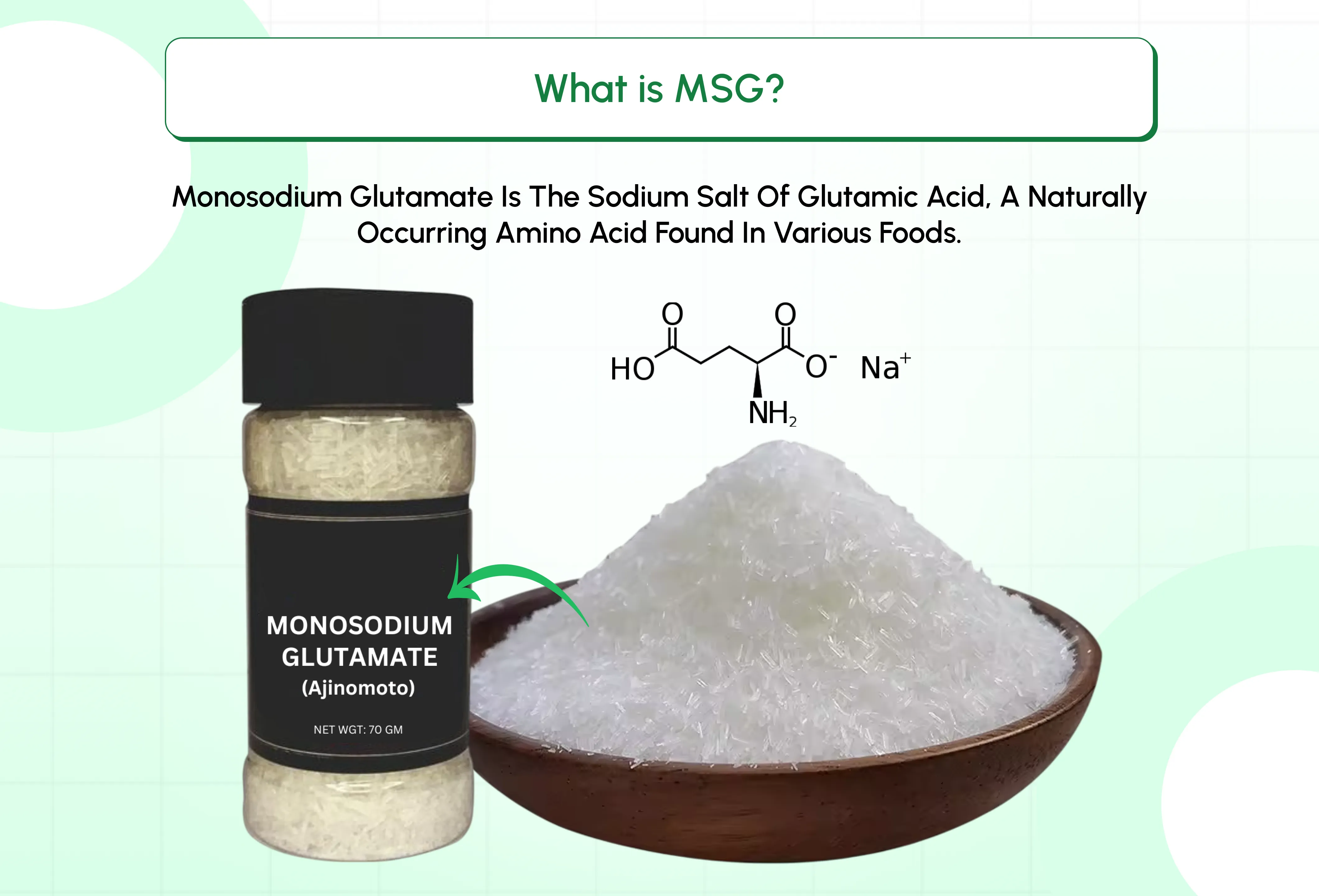
Monosodium Glutamate is the sodium salt of glutamic acid, a naturally occurring amino acid found in various foods. MSG serves as a flavor enhancer that amplifies the umami taste – one of the five basic tastes alongside sweet, sour, salty, and bitter. This savory, meaty flavor makes foods more palatable and satisfying.
MSG was first isolated from seaweed by Japanese scientist Kikunae Ikeda in 1908 and has since become one of the most widely used food additives globally. Today, MSG is commonly found in instant noodles, soups, sauces, seasoning blends, and restaurant dishes, particularly in Asian cuisine.
Common Myths About MSG
Myth 1: MSG Always Causes Headaches and “Chinese Restaurant Syndrome”
The term “Chinese Restaurant Syndrome” was coined in 1968 by Dr. Robert Ho Man Kwok in a letter to the New England Journal of Medicine, describing symptoms he claimed to experience after eating Chinese food. However, this letter was later revealed to be a hoax.
The Reality: Multiple controlled studies have failed to establish a clear causal relationship between MSG and the reported symptoms. A notable 1993 study found that when 71 participants were given MSG, they experienced no more unwanted symptoms than those given a placebo. Research suggests that many reported reactions may be due to the nocebo effect – where people experience symptoms because they expect them to occur.
Myth 2: MSG is a Harmful Chemical
Many people view MSG as an artificial, dangerous chemical additive.
The Reality: MSG is the sodium salt of glutamic acid, an amino acid that occurs naturally in many foods and is essential for protein synthesis in the human body. Your body produces glutamate naturally and requires it for various functions, including learning and memory.
Myth 3: MSG is Banned in Some Countries
This persistent myth suggests that MSG is prohibited due to health concerns.
The Reality: MSG is approved for use by major food safety authorities worldwide, including the FDA, WHO, European Food Safety Authority (EFSA), and other national regulatory bodies. The FDA has classified MSG as “Generally Recognized as Safe” (GRAS).
Myth 4: Only Asian Foods Contain MSG
The association with “Chinese Restaurant Syndrome” has led many to believe MSG is exclusively used in Asian cuisine.
The Reality: MSG is found in numerous Western foods, including chips, processed meats, canned soups, salad dressings, and frozen dinners. Many popular snack foods and restaurant chains use MSG to enhance flavor.
Facts Backed by Science
1. Regulatory Approval and Safety Standards
Multiple prestigious health organizations have evaluated MSG’s safety extensively:
- FDA: Maintains MSG’s GRAS status, meaning it’s considered safe when consumed within recommended limits.
- WHO: Through JECFA, established an acceptable daily intake (ADI) of 0-120 mg/kg body weight – equivalent to about 8,160 mg per day for a 150-pound adult.
- EFSA: Set a group ADI of 30 mg/kg/day for glutamic acid and glutamates.
- American Medical Association: Supports MSG’s safety classification.
2. Actual Consumption vs. Safety Limits
The average American consumes only 400-500 mg of MSG per day from ultra-processed and restaurant foods – well below established safety thresholds. In comparison, Europeans consume an estimated 0.3-1.0 grams daily.
Also Read:
Top 10 Food Additives You Must Avoid3. Scientific Evidence on Sensitivity
A comprehensive 1997 study examined self-identified MSG-sensitive individuals using double-blind, placebo-controlled trials. Results showed that 36.1% responded to MSG while 24.6% reacted to placebo, suggesting psychological factors may play a significant role. When symptoms did occur, they were typically mild and temporary.
The Federation of American Societies for Experimental Biology (FASEB) concluded that MSG is safe, noting that some sensitive individuals might experience mild, short-term symptoms only when consuming 3 grams or more of MSG without food – far exceeding typical dietary exposure.
4. Metabolic Safety
Research demonstrates that dietary glutamate doesn’t significantly cross the blood-brain barrier, making it unlikely to affect brain function. Nearly all orally consumed glutamate is metabolized by intestinal cells during absorption, with very little entering systemic circulation.
MSG in Packaged Food: Should You Avoid It?
1. Regulatory Approval and Safety Standards
While MSG itself is generally safe, certain scenarios warrant caution:
- Excessive consumption: Some studies suggest very high doses (above normal dietary intake) may cause temporary increases in blood pressure.
- Sensitive individuals: Less than 1% of the population may experience mild symptoms when consuming large amounts on an empty stomach.
- Ultra-processed foods: The concern often lies not with MSG itself, but with the overall nutritional quality of heavily processed foods that contain it.
2. Natural vs. Added MSG
MSG occurs naturally in many foods we consider healthy:
Natural Glutamate Content (mg/100g):
- Parmesan cheese: 1,680
- Dried shiitake mushrooms: 1,060
- Roquefort cheese: 1,280
- Dried tomatoes: 650-1,140
- Walnuts: 658
- Fresh tomatoes: 246
- Cheddar cheese: 182
These naturally occurring glutamates function identically to added MSG in terms of taste enhancement and metabolism.
3. Labeling Requirements
In the United States, FDA regulations require MSG to be clearly labeled when added to foods. However, foods containing naturally occurring glutamate (like tomatoes and cheese) don’t require MSG disclosure. Some countries have stricter labeling requirements – India requires products containing MSG to carry warnings that they’re “not recommended for infants below 12 months.”
How the FactsScan App Helps
Modern technology offers powerful tools to make informed food choices. The FactsScan app provides comprehensive food scanning capabilities to help you navigate ingredient labels effectively.
1. Key Features for MSG Detection
Barcode Scanning: Simply scan any packaged food product’s barcode to instantly access detailed ingredient lists, nutritional information, and additive content. The app identifies MSG and related compounds, helping sensitive individuals make informed choices.
- Ingredient Analysis: FactsScan decodes complex ingredient lists and highlights potentially concerning additives, including MSG, artificial preservatives, and excessive sodium. Each product receives a health score from 0-100 and a letter grade from A (healthy) to E (unhealthy).
- Smart Recommendations: When scanning products with concerning ingredients, the app automatically suggests healthier alternatives in the same category. This feature helps you find MSG-free options if you prefer to avoid it.
- Allergen Detection: The app flags common allergens and dietary concerns, making it valuable for individuals with specific sensitivities or dietary restrictions.
- Custom Preferences: Set dietary preferences (vegetarian, vegan, low-sodium) to receive personalized recommendations tailored to your health goals.
2. Practical Benefits
FactsScan transforms grocery shopping by providing instant access to comprehensive food information. Instead of spending time deciphering complex labels, you can quickly scan products and receive clear, actionable insights. This is particularly valuable for:
- Parents checking children’s snacks for excessive additives
- Individuals with food sensitivities seeking to avoid specific ingredients
- Health-conscious consumers wanting to understand product quality
- Anyone interested in making more informed food choices
Conclusion
The scientific evidence overwhelmingly supports MSG’s safety when consumed in typical dietary amounts. Most fears surrounding MSG stem from debunked studies, cultural biases, and the perpetuation of myths rather than legitimate health concerns. The “Chinese Restaurant Syndrome” has been largely discredited by modern research, and regulatory agencies worldwide continue to affirm MSG’s safety.
However, individual sensitivity can vary, and some people may choose to limit MSG intake for personal reasons. The key is making informed decisions based on scientific evidence rather than unfounded fears.
For those seeking to monitor their MSG intake or avoid it entirely, tools like the FactsScan app provide valuable assistance in navigating today’s complex food landscape. By scanning product barcodes, you can quickly identify MSG and make choices aligned with your dietary preferences and health goals.
Remember that the overall quality of your diet matters more than any single ingredient. Focus on consuming a balanced diet rich in whole foods, limit ultra-processed products, and use technology wisely to support your health journey. MSG, when consumed as part of a varied, balanced diet, poses no significant health risks for the vast majority of people.
Ready to take control of your food choices? Download the FactsScan app today and start making informed decisions about the foods you eat. Scan, analyze, and choose with confidence – your health is worth it.
Ready to make Healthier Choices?
Download FactsScan now from the Google Play Store and App Store and take charge of your food choices.

Recent Articles
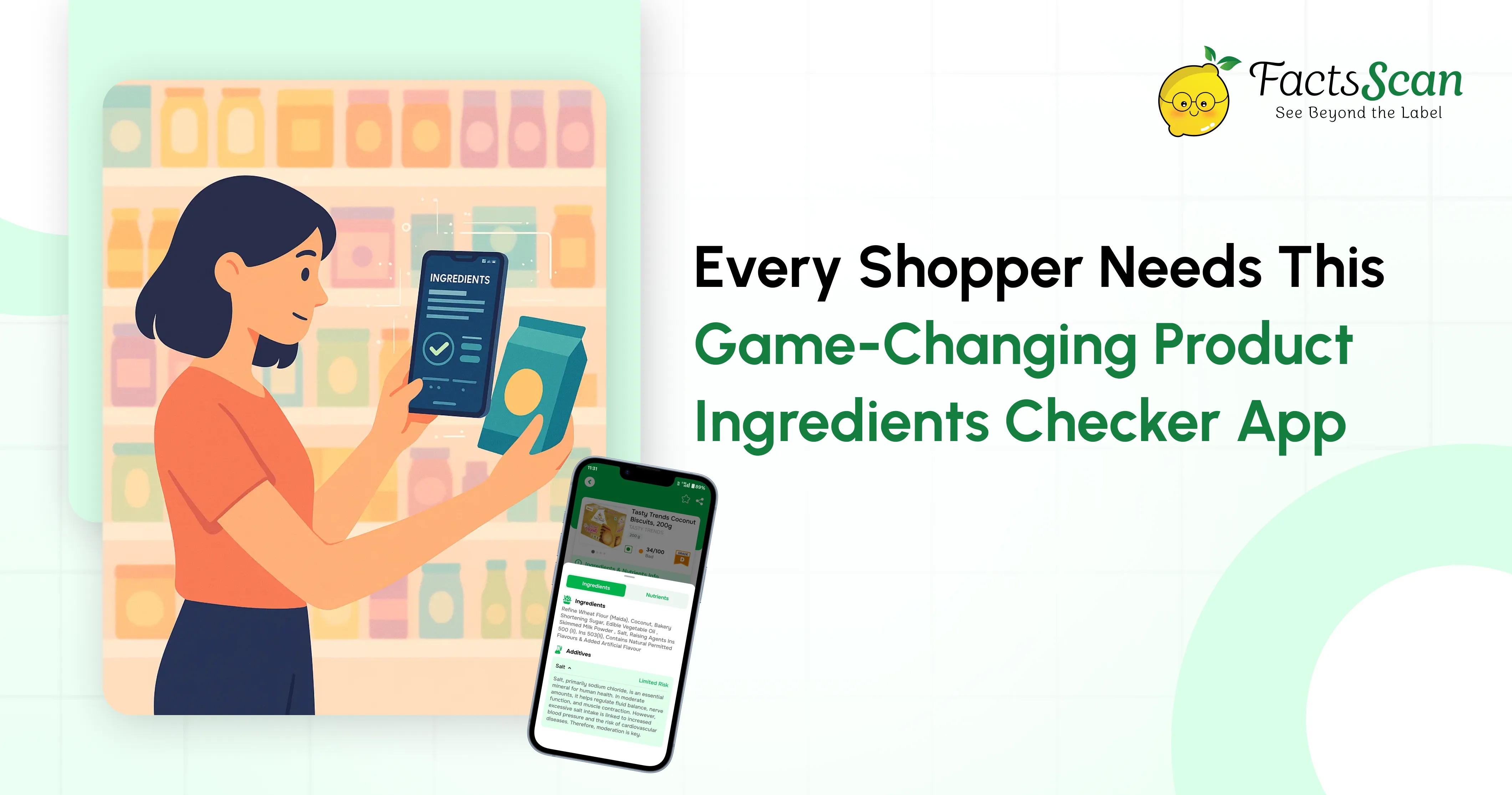
Every Shopper Needs This Game-Changing Product Ingredients Checker App
Tired of confusing food labels and hidden ingredients? This game changing product ingredients checker app helps shoppers instantly scan barcodes to uncover real nutritional facts, health scores, and safer alternatives, making smarter, healthier shopping easier than ever.
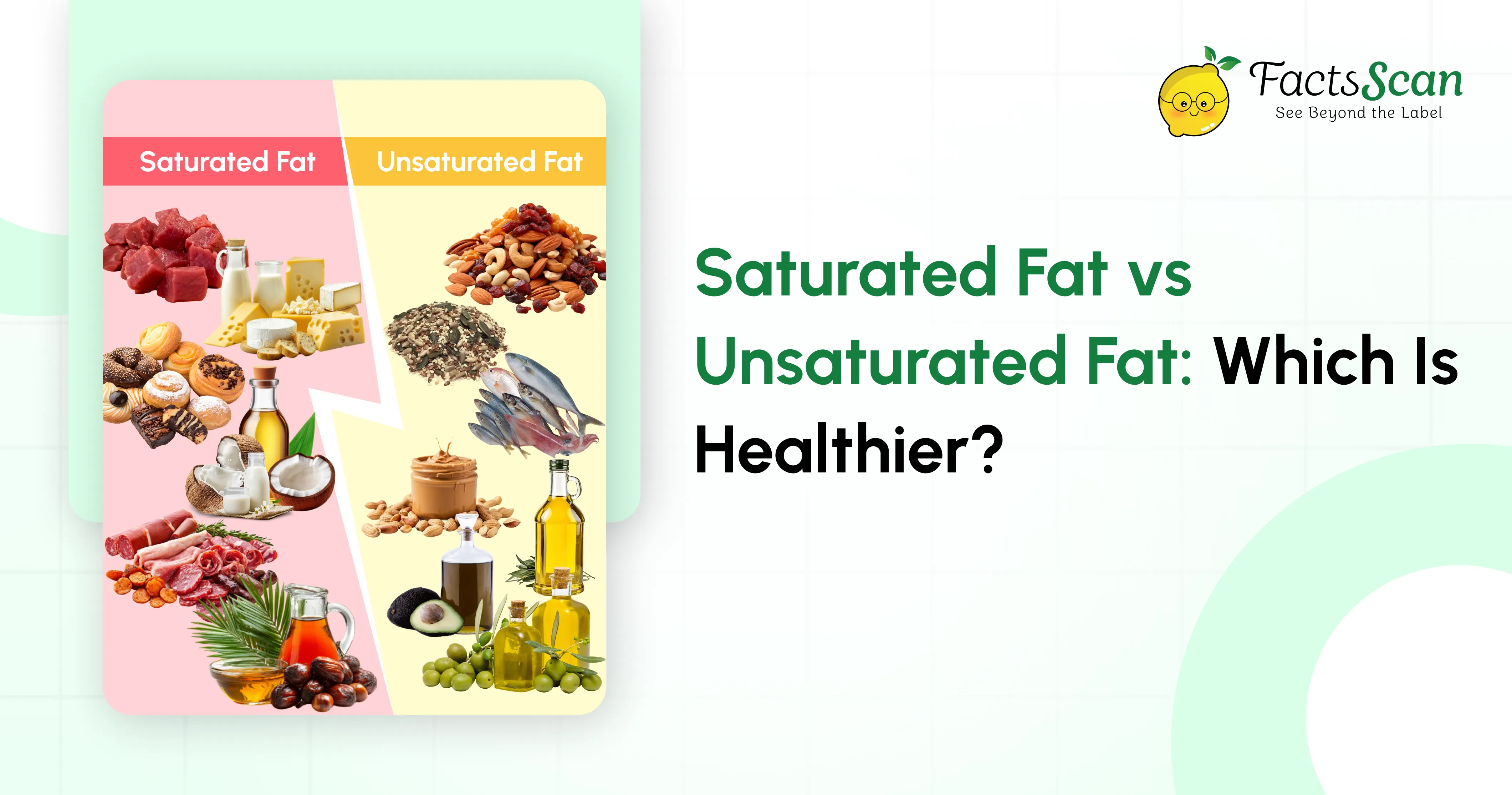
Saturated Fat vs Unsaturated Fat: Which Is Healthier?
Saturated and unsaturated fats affect our health in different ways. While saturated fats—commonly found in meat, butter, and full-fat dairy—can increase cholesterol levels, unsaturated fats, present in nuts, seeds, and vegetable oils, help improve heart health. Prioritizing unsaturated fats over saturated ones can lead to better overall wellness.
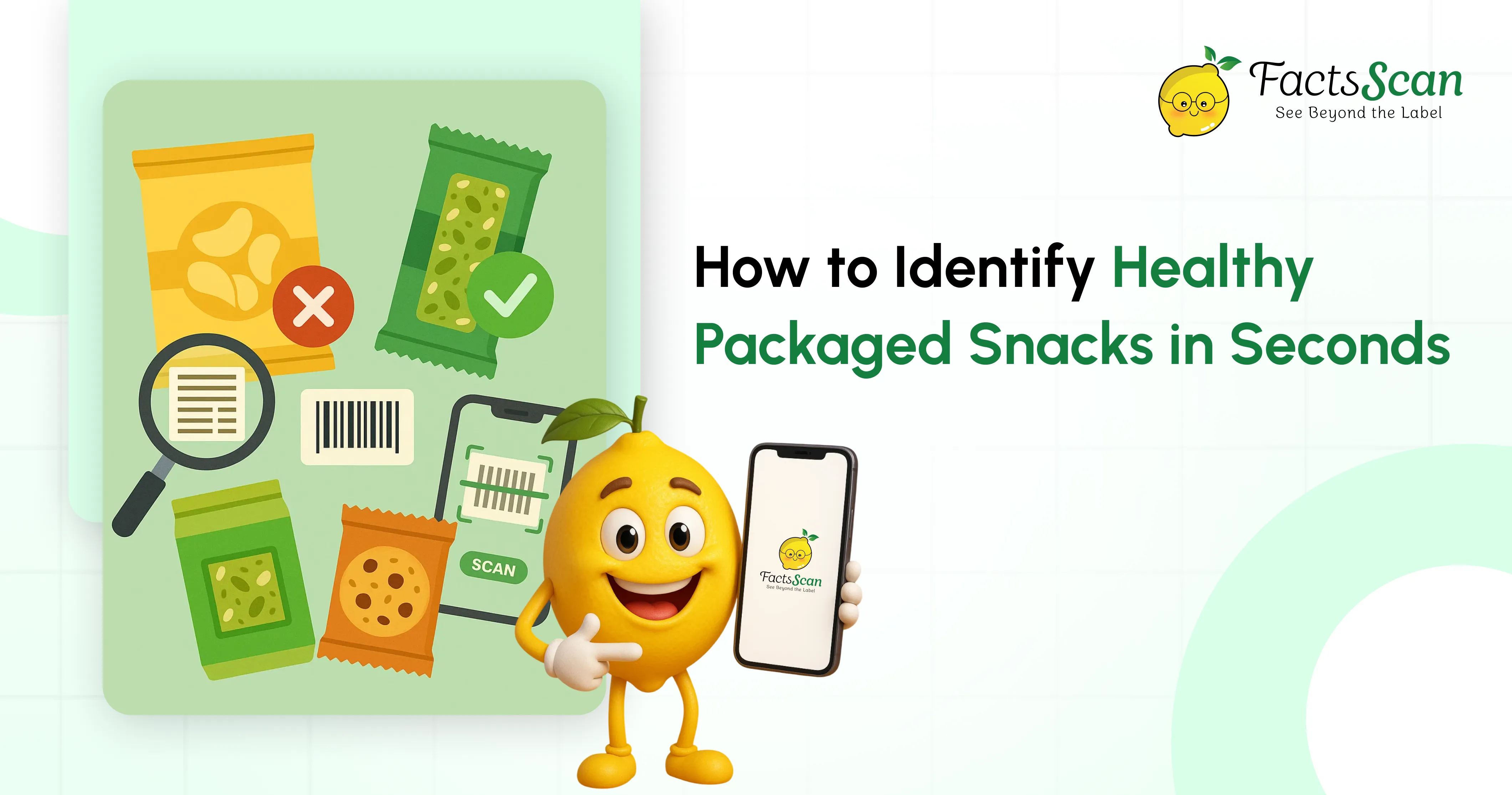
How to Identify Healthy Packaged Snacks in Seconds
Finding healthy packaged snacks is challenging when clever marketing disguises nutrition facts and confusing labels hide harmful ingredients. Smart shoppers can decode labels instantly using simple nutrition checks, ingredient red flags, and powerful food scanning apps like FactsScan that reveal health scores, ingredient warnings, and suggest better alternatives with just a quick barcode scan.
 10 Sep 2025
10 Sep 2025 8 Min Read
8 Min Read 
